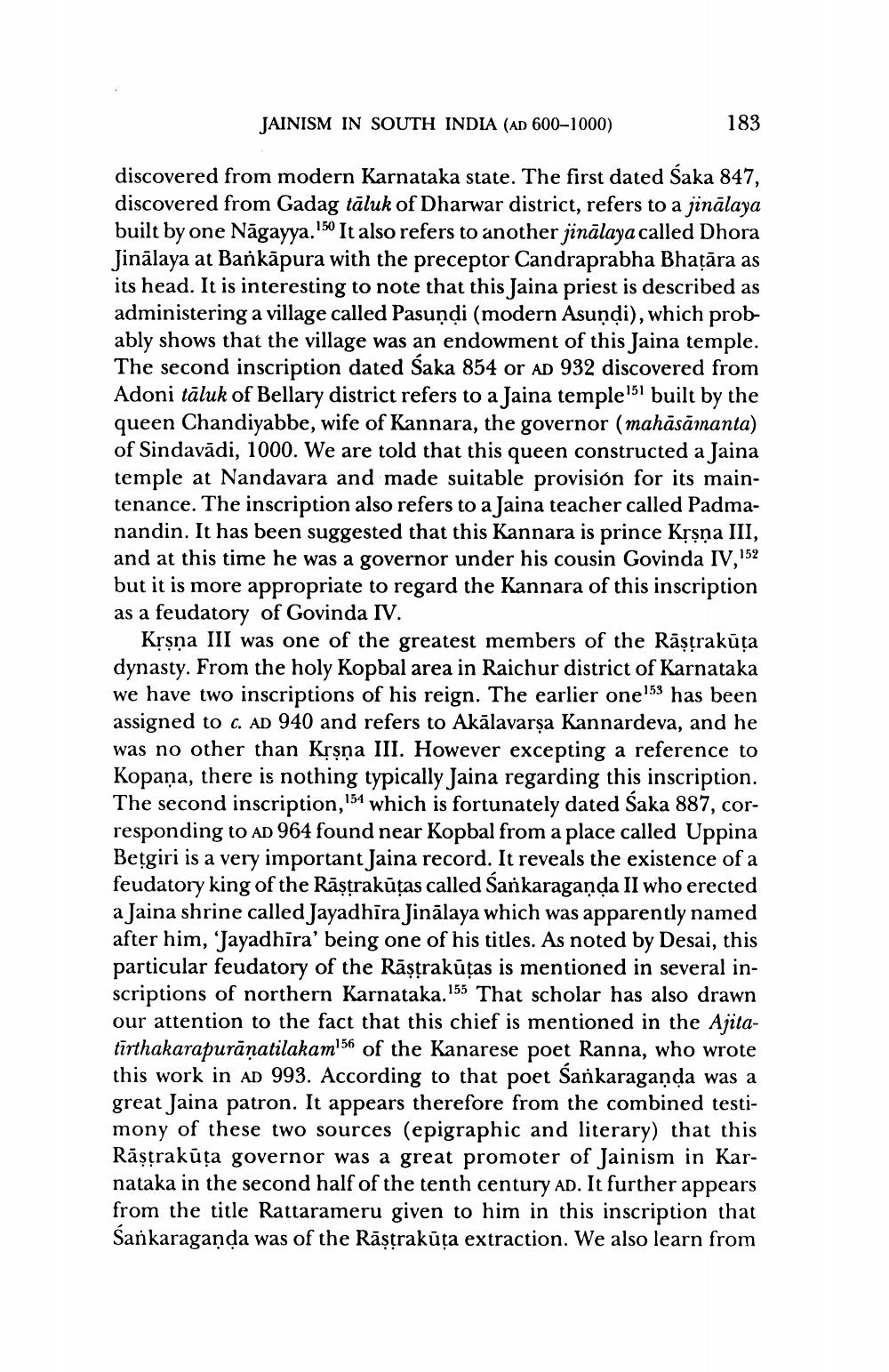________________
183
JAINISM IN SOUTH INDIA (AD 600-1000)
discovered from modern Karnataka state. The first dated Śaka 847, discovered from Gadag taluk of Dharwar district, refers to a jinālaya built by one Nāgayya. 150 It also refers to another jinālaya called Dhora Jinālaya at Bankapura with the preceptor Candraprabha Bhaṭāra as its head. It is interesting to note that this Jaina priest is described as administering a village called Pasundi (modern Asundi), which probably shows that the village was an endowment of this Jaina temple. The second inscription dated Śaka 854 or AD 932 discovered from Adoni taluk of Bellary district refers to a Jaina temple11 built by the queen Chandiyabbe, wife of Kannara, the governor (mahāsāmanta) of Sindavadi, 1000. We are told that this queen constructed a Jaina temple at Nandavara and made suitable provisión for its maintenance. The inscription also refers to a Jaina teacher called Padmanandin. It has been suggested that this Kannara is prince Kṛṣṇa III, and at this time he was a governor under his cousin Govinda IV, 152 but it is more appropriate to regard the Kannara of this inscription as a feudatory of Govinda IV.
Kṛṣṇa III was one of the greatest members of the Raṣṭrakūta dynasty. From the holy Kopbal area in Raichur district of Karnataka we have two inscriptions of his reign. The earlier one153 has been assigned to C. AD 940 and refers to Akālavarṣa Kannardeva, and he was no other than Kṛṣṇa III. However excepting a reference to Kopana, there is nothing typically Jaina regarding this inscription. The second inscription, 154 which is fortunately dated Śaka 887, corresponding to AD 964 found near Kopbal from a place called Uppina Betgiri is a very important Jaina record. It reveals the existence of a feudatory king of the Rastrakutas called Sankaragaṇḍa II who erected a Jaina shrine called Jayadhīra Jinālaya which was apparently named after him, 'Jayadhira' being one of his titles. As noted by Desai, this particular feudatory of the Raṣṭrakūtas is mentioned in several inscriptions of northern Karnataka.155 That scholar has also drawn our attention to the fact that this chief is mentioned in the Ajitatirthakarapuraṇatilakam156 of the Kanarese poet Ranna, who wrote this work in AD 993. According to that poet Sankaraganda was a great Jaina patron. It appears therefore from the combined testimony of these two sources (epigraphic and literary) that this Rāṣṭrakūta governor was a great promoter of Jainism in Karnataka in the second half of the tenth century AD. It further appears from the title Rattarameru given to him in this inscription that Sankaraganda was of the Rāṣṭrakūta extraction. We also learn from




